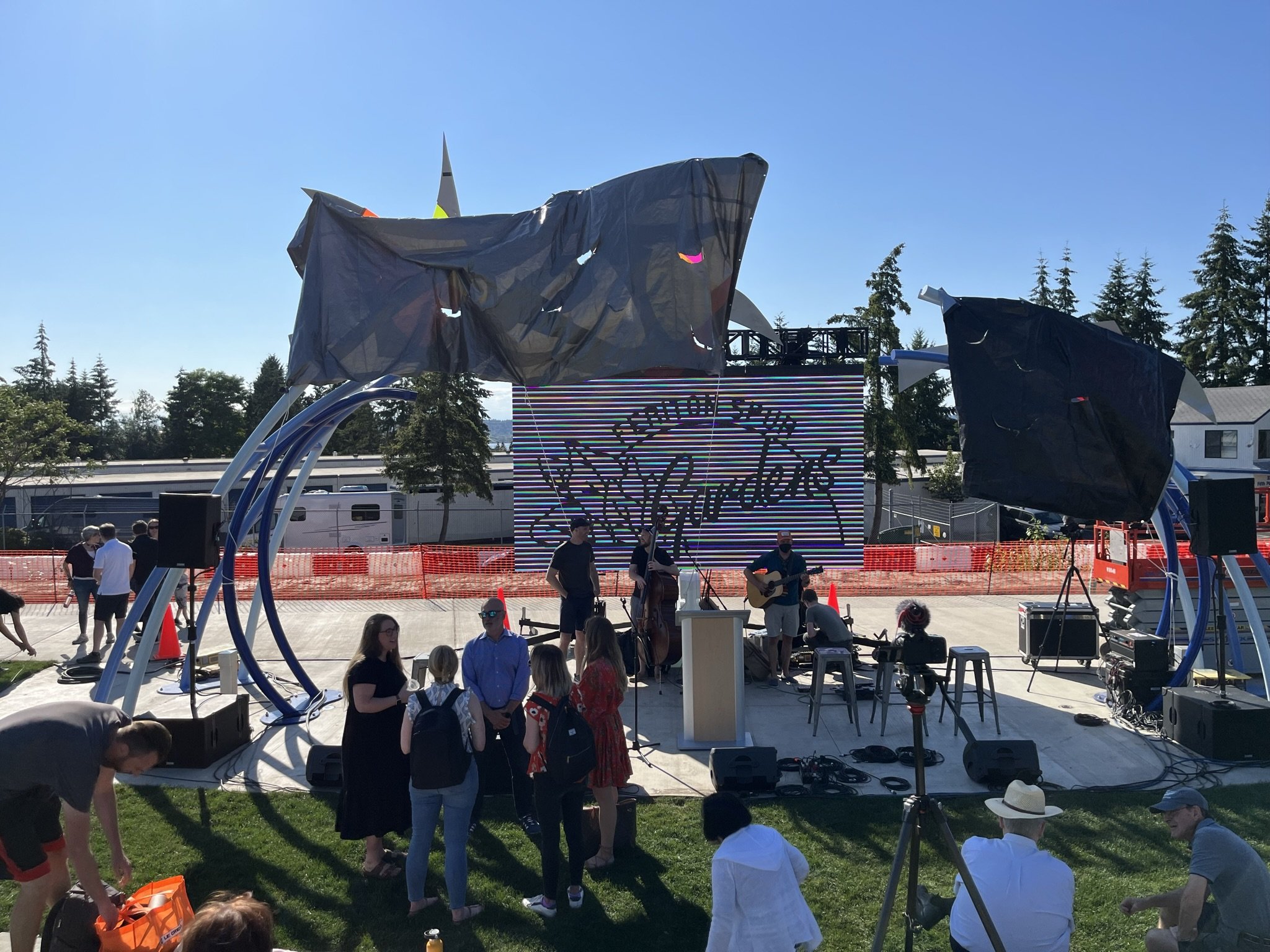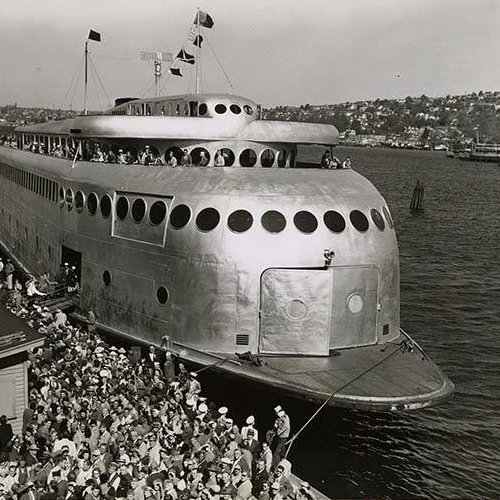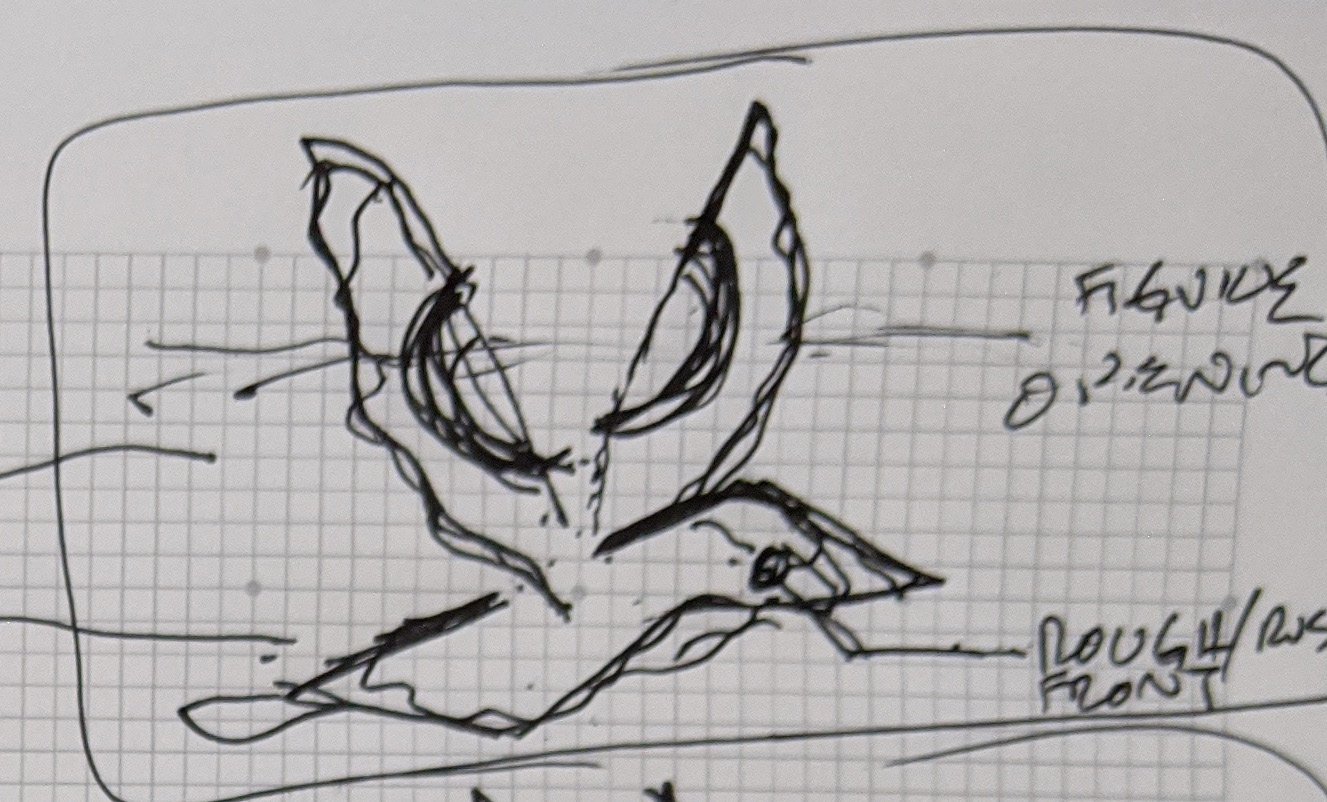By Angela Mele
Some of our favorite projects integrate science and design to create public places that are not only sustainable, but that also tell stories about relationships between people, land, water, and technology in the Pacific Northwest.
In August, we celebrated the grand opening of one of these places: the newly expanded Feriton Spur Park on a rail trail called the Cross Kirkland Corridor. Hosted by the City, this event brought several of our project partners and community members together for an unveiling of the park’s new offerings including a caboose café, pickleball court, fruit and flower gardens, splash area, restrooms, and amphitheater.
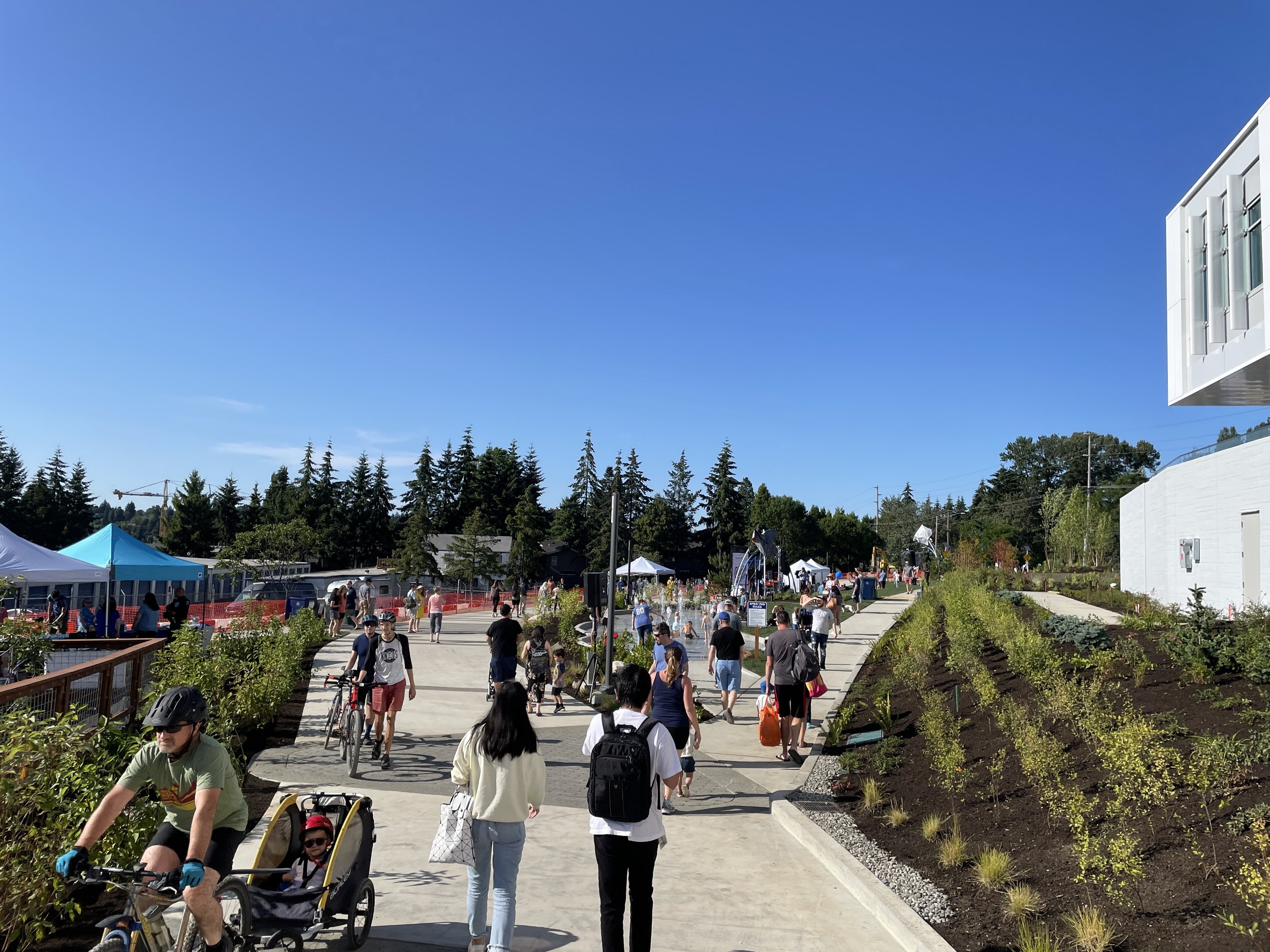
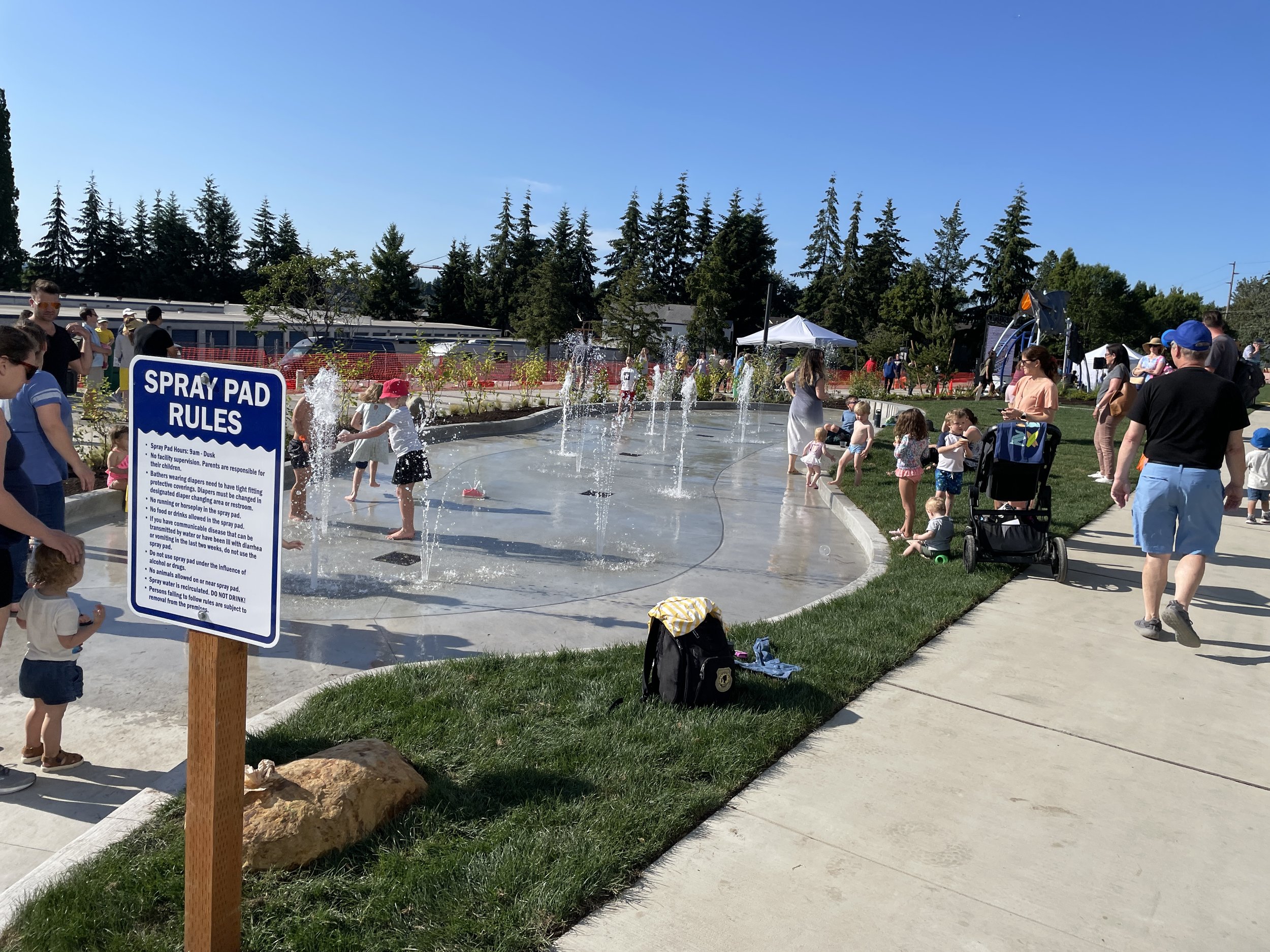
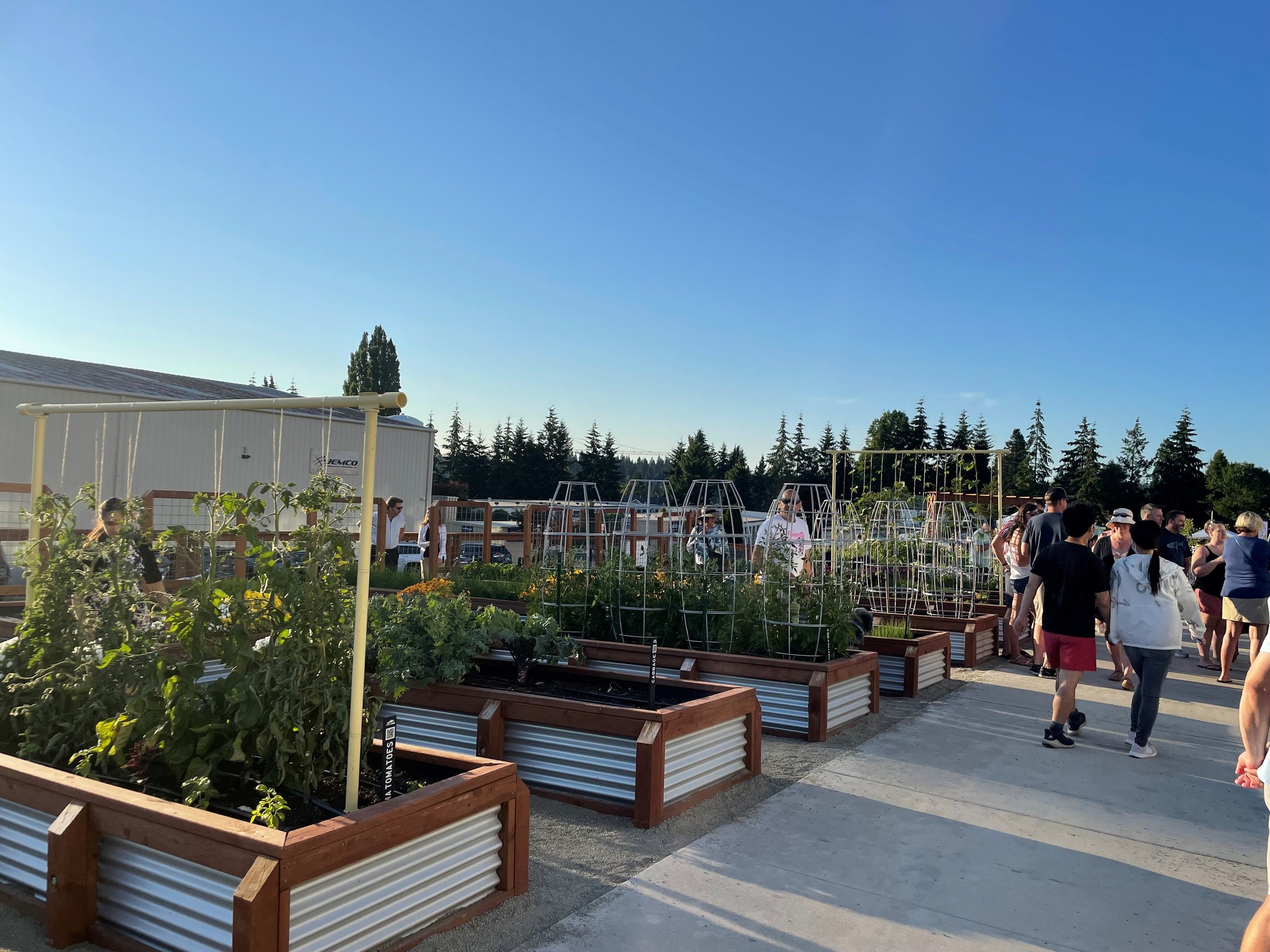
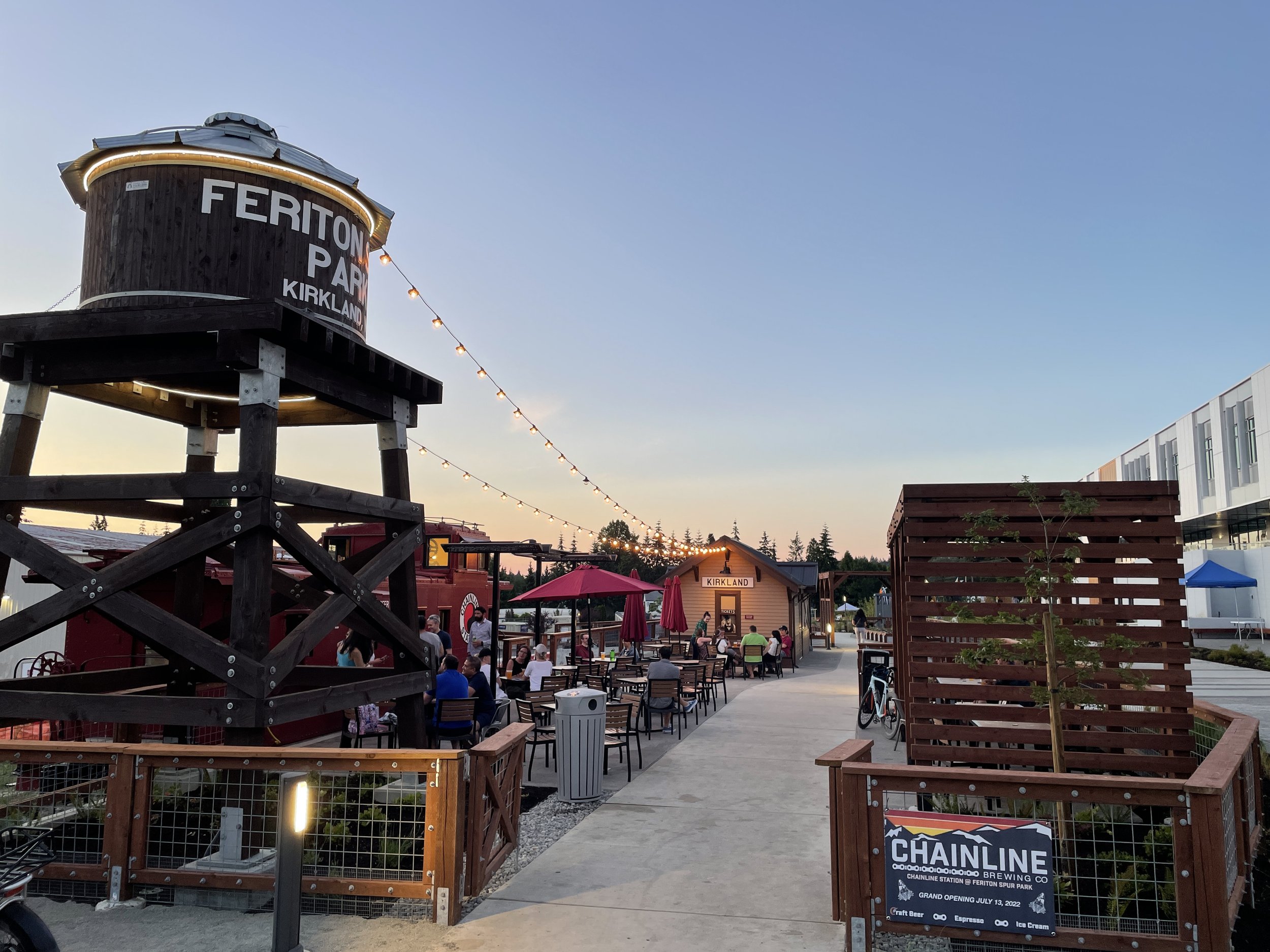
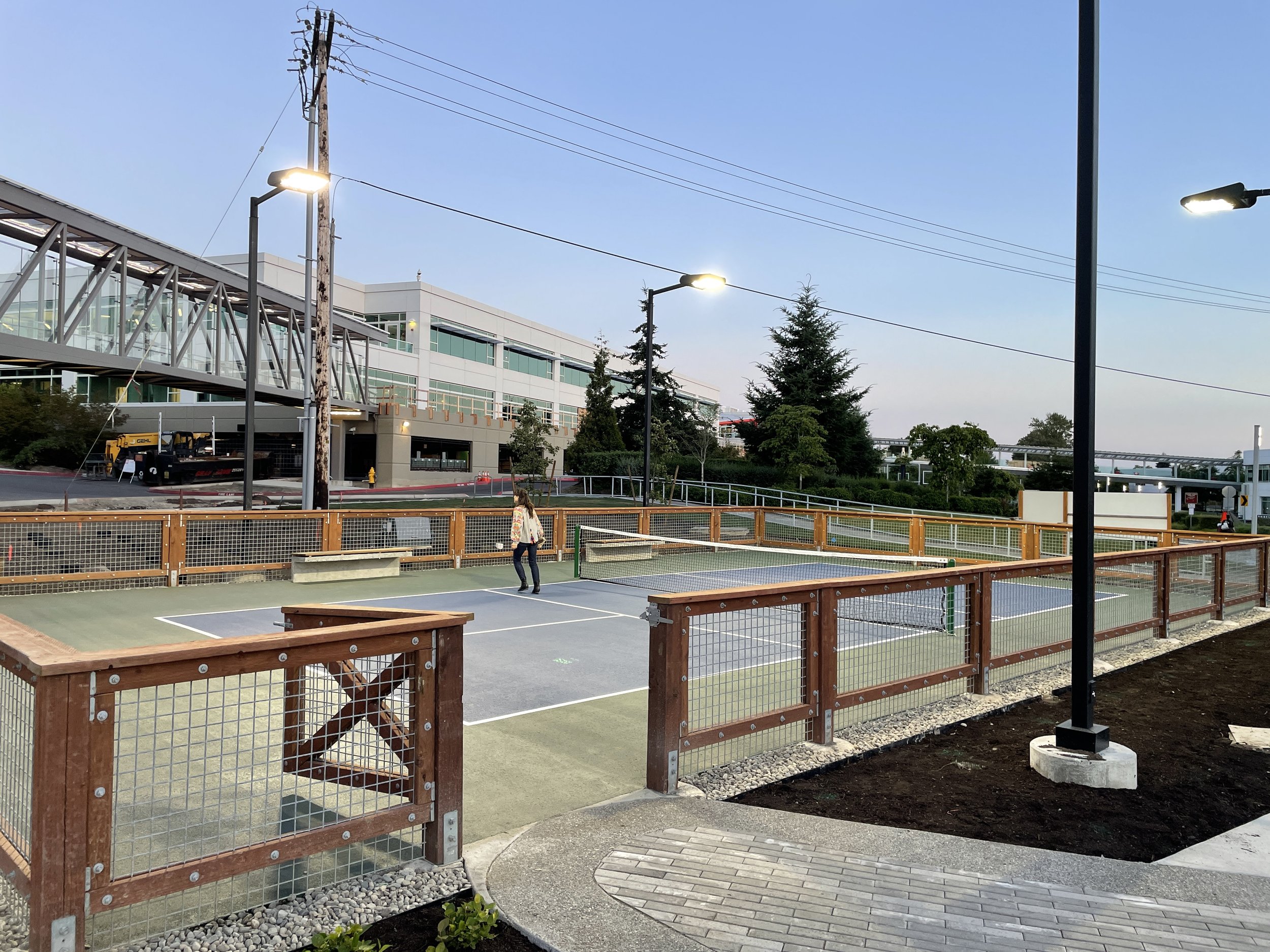
One focal point of the park’s expansion is a public artwork designed by Watershed’s Amber Mikluscak, a senior landscape architect and artist. “Kalakala in Flight” incorporates pieces of a historic ferry, known as the Kalakala, which was partially built near the park’s site in the 1930s.
Moments before the unveiling of “Kalakala in Flight” (Photo Credit: Grace Brennan)
A VESSEL OF BYGONE ERAS
Here is a glimpse of the Kalakala’s many incarnations, from art deco icon to party boat to abandoned fish cannery.
Credit: Postcard published by C. P. Johnston Co, Seattle, 1930 – 1945. The Tichnor Brothers Collection, Boston Public Library.
1935-1967: A futuristic ferry with velvet seats and an 8-piece band carried commuters and party people across the Puget Sound. This ferry was reincarnated from an older one that had crashed, then burned, in California. That unlucky ship’s hull was towed to Kirkland’s Lake Washington Shipyard, where workers transformed it into the glamorous “Kalakala”—named after Chinook jargon for “flying bird.”
In 1935, the Kalakala was the largest, fastest ferry on the Sound, sporting a 3000-horsepower diesel engine and the latest in aerodynamics. Up to 2,000 passengers enjoyed the five decks, horseshoe-shaped lunch counter, and separate lounges for men and women. Shipyard workers could shower on their way home, and flappers danced past midnight to the tunes of the Flying Bird Orchestra. (Photo Credit: Seattle Post-Intelligencer Collection, Museum of History & Industry, Seattle; All Rights Reserved)
Credit: Seattle Post-Intelligencer Collection, Museum of History & Industry, Seattle; All Rights Reserved
1967-2004: By the late 60s, cars were too big to fit on deck and safety issues arose. The Kalakala was auctioned to a fish packer in Alaska, where she was eventually abandoned for several decades. In the 90s, Seattle artists initiated the effort to return and restore her.
Kalakala abandoned on Kodiak Island, 1971.
Crowds cheered as the Kalakala was towed to Seattle’s waterfront in 1998. But financial support ran dry, and the damaged ferry was moved to Lake Union where she was seen as an eyesore. The Kalakala was auctioned off again, moved to Neah Bay, then in 2004 moved to Tacoma. Time passed, and so did a state law regarding removal of abandoned vessels. The Coast Guard declared the ship a hazard to navigation.
Credit: Joegoodfriend
2015: Despite further determination to restore her—the rusty, peeling Kalakala was towed to a Tacoma dry dock and dismantled for scrap metal. Within hours after demolition, souvenir-hunters and historians bought nearly every remaining piece.
The City of Kirkland acquired a wheelhouse, doors, a rudder trim, and pieces of stair railings. They also bought a section of windows from the bow of the ship for future public art.
In 2019, while The Watershed Company and partners were designing the Feriton Spur Park expansion, the City arranged for our team to visit the salvaged remnants and consider how they might find new life in the park. We were honored by the opportunity to create an artwork that both brings people together and instills the park expansion with a unique sense of place.
A few of the former scraps began to come alive on our design pages. If we could find a willing fabricator, we were ready to make this ferry fly once more.
REIMAGINING THE KALAKALA
Watershed artist and senior landscape architect Amber Mikluscak, share how she conceptualized the final sculptures:
Q: How do you hope people will perceive or experience “Kalakala in Flight?”
A: During the Kalakala’s service as a ferry, people would see it all the time: crossing the water, parked in harbors. It was both commonplace and iconic. I hope that through its reimagining, in its new form and location, it’ll regain that day-to-day familiarity. I hope people form a new kind of relationship with it.
Q: Over the years, many works of art have been made about the Kalakala, or at least have been imagined and considered. How did you come up with the idea for this series of sculptures?
A: We tested a lot of ideas, but the most informative thing was to create paper maquettes—tiny models—that could be manipulated and cut up. Today, we’re used to seeing images of the wreckage of the boat. But in its heyday, you would have noticed its impact on the water; the reflections and movement. There’s a beautiful photo of passengers looking out of its round portholes as the sun set. It made me think of how light and water would interact with the boat. The documentation about the boat's history says that “Kalakala” means “flying birds” in Chinook, so I was also thinking about how shorebirds glimmer, drag their feet on the water, create a wake. And the Kalakala’s art deco form is shorebird-like, to me.
The newly installed sculpture now creates a lively gathering spot within the larger public space—itself a revitalization of land shaped by an ebb and flow of industry, transport, and recreation.
Credit: Kelly Champoux
The sculpture forms an arc over the amphitheater stage and casts colors that shift with the sun’s elevation. (Photo Credit: Kyle Braun)
